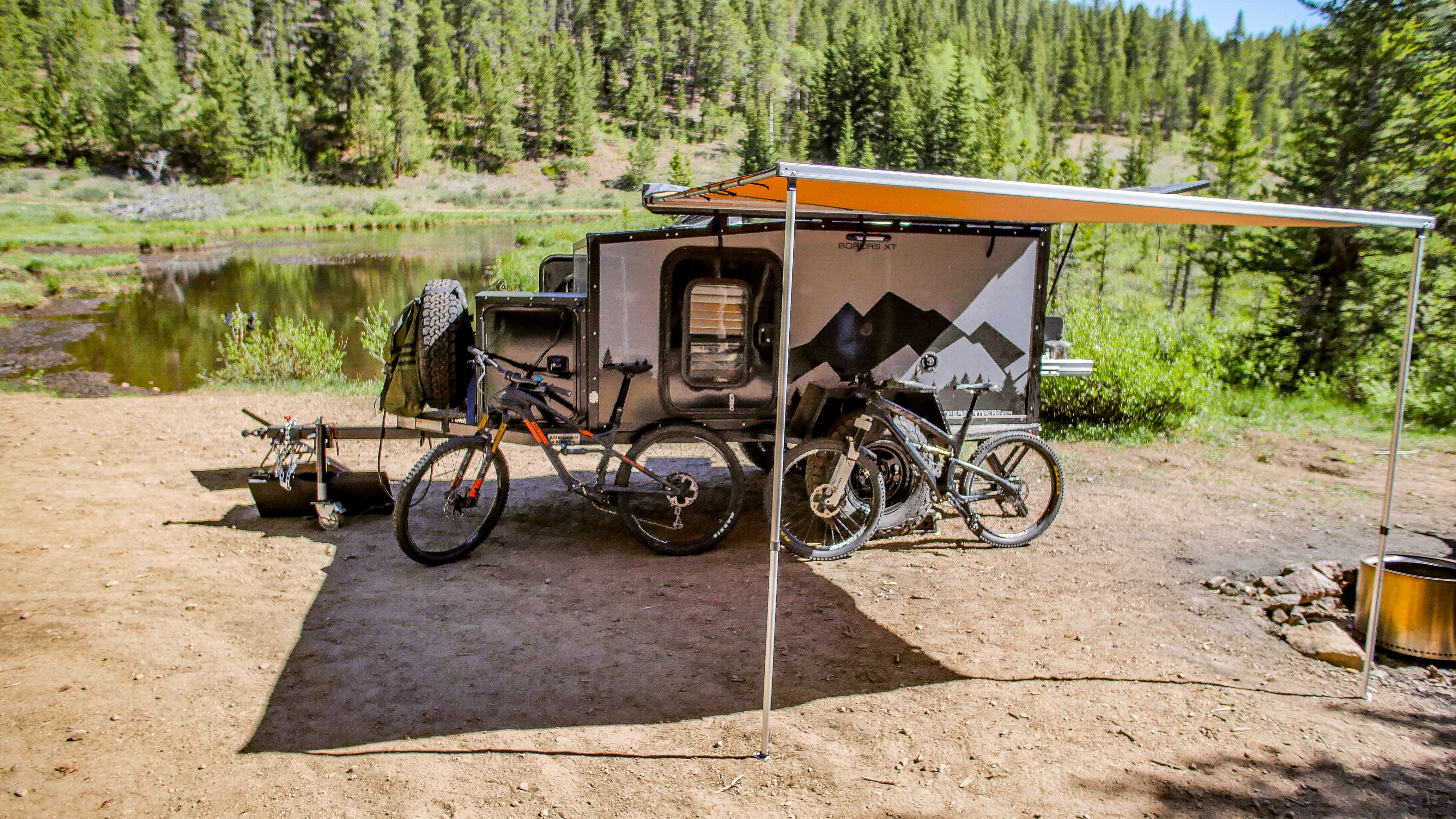
SO YOU WANT TO GET INTO MOUNTAIN BIKING?
Mountain biking is SO.MUCH.FUN! If you’ve seen friends or family members get into it and want to check it out, or you’ve had a beater bike for a while and are ready to make the jump to the next step you are in the right place!
I’ll walk through lingo to know, bike elements to be aware of as you make your decisions about purchasing, and brands that are hot right now. I’ll also use anecdotes and throw in my personal opinion in spots so you get a better feel for real life application of all this info. For what it's worth, I am an intermediate rider that has been mountain biking for 5 years.
This article was inspired by my cousin asking me to tell him ‘everything he needs to know’ about mountain biking, and the list kept growing. That made me want to put it all down because I’m sure other people are wondering the same thing. So here we go:
TLDR: The top 3 things I look for in a mountain bike are: a dropper post, a single front chain ring for your gears, and disc brakes. None of the high end mountain bike (mtb) brands will come without these, but ask if you’re looking at a used bike, or something that is more of an entry level bike.
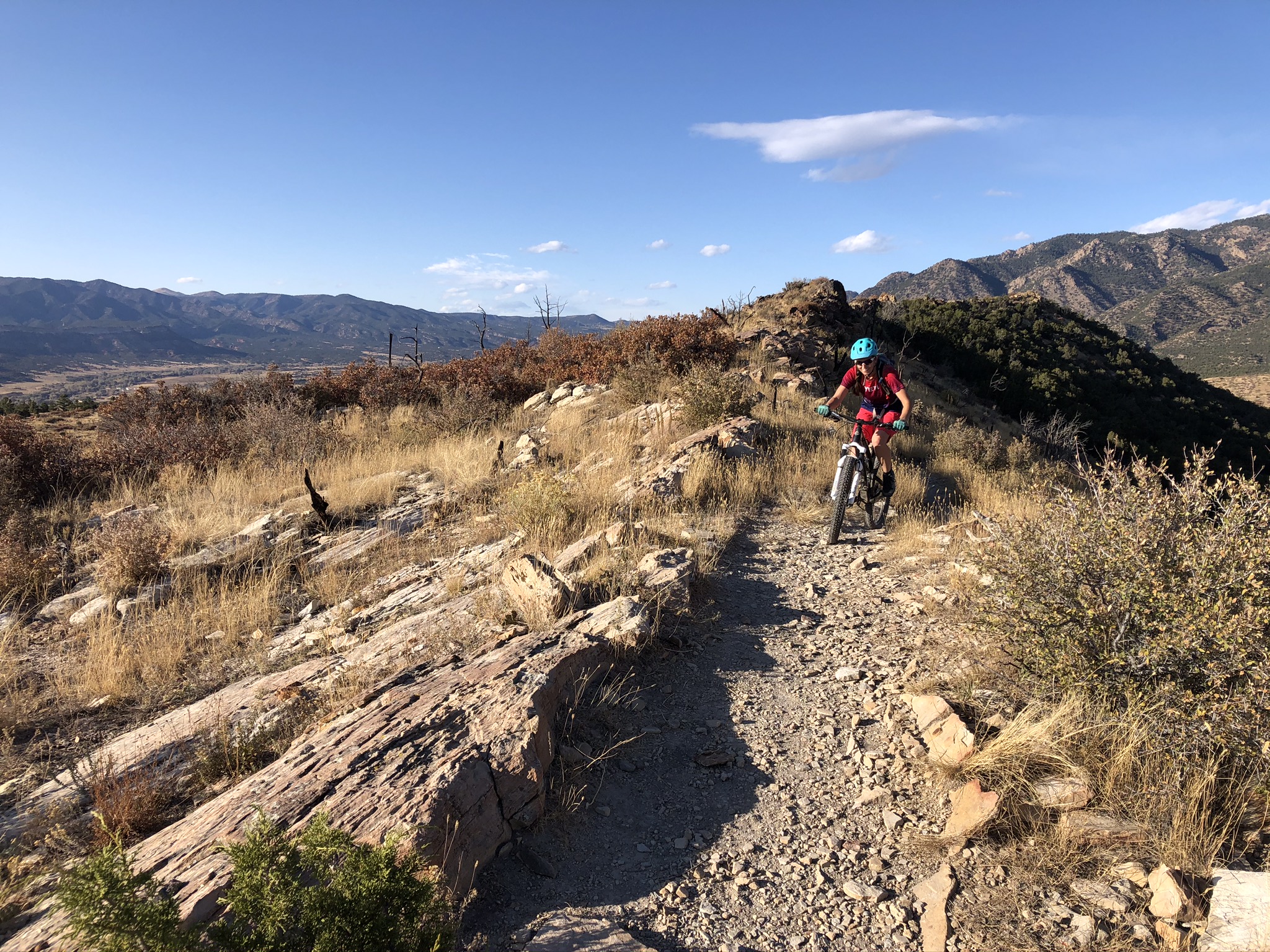
THE BIKE
The big things to know about bikes:
Wheels. This is a biggie. First, size. Wheels come in 26”, 27.5” and 29” wheels, measuring the diameter. 26” was the standard for a long time, but now 27.5” is the most popular. You would be hard-pressed to find a new 26” mountain bike, but there are plenty quality 26ers in circulation. 29.5” is now en vogue, and people (my husband) rave about the ability to pedal over large obstacles and vow they’re never going back. I personally demo’d a 29” and it was too high for me to be comfortable.
Bonus info: some people have started going with a “mullet” setup where they use different size tires on their front and rear. I’m not exactly sure what the competitive advantage is here, but it is certainly something fun to talk about.
*Quick note – while some bikes can handle a tire change from one size to another, not all bikes can. So if you want to try 29” wheels thinking you can swap to 27.5” if you don’t like it, make sure your bike is set up to handle both sizes before you make the plunge.
The other type of size relates to how wide the tire is. You have your regular tires, plus size, and fat bikes. I normally only see fat bikes used on snow, as the larger footprint helps them stay on top of the surface. Plus size tires seem to give folks an advantage when it comes to rolling over things, but they are more unwieldly (and require more power from what I can tell). If you're starting out I would recommend going with regular width tires.
Lastly, you need to decide if you want tubes, or if you’re going tubeless. If you can, you want to go tubeless. Most mtbs are, and they’re easy to fix with some sealant for small leaks, or you can just put a tube into it if you’re in the middle of nowhere with a big leak. Any bike shop can get you set up to be tubeless and there are lots of tutorials on how to repair and re-seal them.
Shocks aka Suspension. You’ve got your front shock, or fork (it has the 2 prongs that go over the front wheel that looks like a fork), and your rear shock. If you don’t have a rear shock we call that bike a hardtail (as in, it is hard on your tail). If you have both the front and rear shocks, that’s called a full suspension bike, or ‘full squish’.
The lovely thing about shocks is that they absorb a large percentage of the chatter that occurs when you’re going over rocky, bumpy and/or technical terrain. The other side is that you lose energy keeping yourself balanced on a frame that is trying to make the ride smooth for you. That’s why you don’t see suspension on road bikes, they want all of their energy to go into pushing the bike forward, instead of having a cushy ride. That’s where a hardtail comes in as a sort of middle ground. You don’t lose energy having the rear shock, but you still get the support on the front end of the bike.
On a related note, most shocks have an uphill, neutral and downhill setting. So if you’re going uphill and you want as much energy as possible to go towards moving forward, the shocks will lock out and you won’t waste energy bouncing up and down like you’re in a Cadillac. Then turn to the downhill, ‘fun mode’ to open the shocks to eat up all of the rocks as you scream downhill.
Your shocks are aired up like your tires to fit your style of riding. You typically want your rear suspension to have a psi of about your body weight (maybe a touch less), and your front suspension to be about half of your body weight. But this is something you can test and tweak based on how hard you’re riding (and you never want to bottom out).
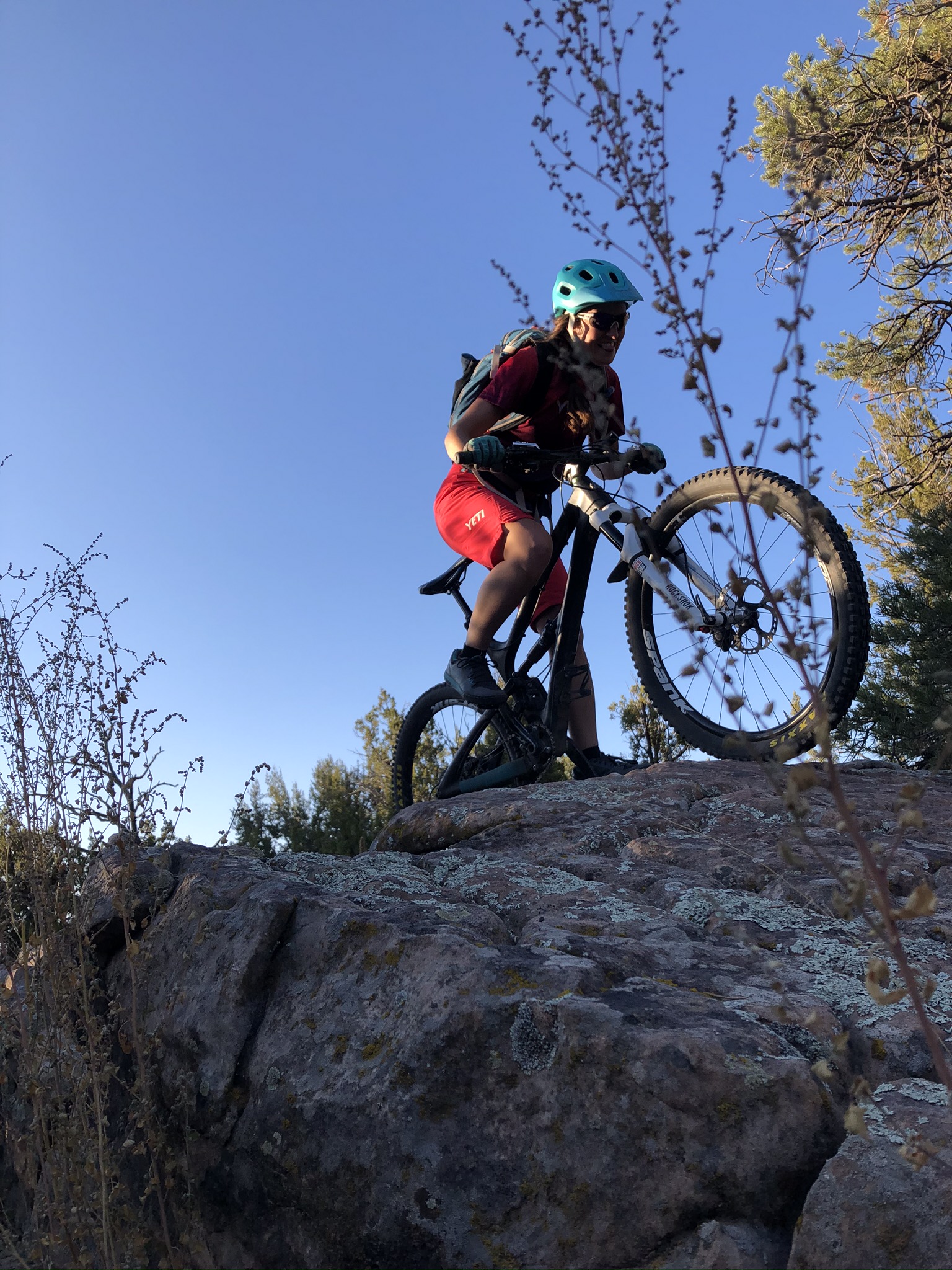
Dropper Post. It’s a game changer. At the very least you want a quick release seat dropper. If you are doing any hills you want your seat all the way up so your leg is fully extended when it’s at the bottom point. This means you’re getting the maximum effort out of your leg pump. Likewise, if you’re heading downhill, you want your seat all the way down. If you come to a steep section you’re going to put your butt back as far as you can, past the back of the seat, and you can’t do that if your seat is in the way! When you’re pointed downhill you want your body crouched over the frame of the bike, and you do that best when the seat is down.
Gears. This is another biggie. Having one big ring up front so you’re only shifting with one hand frees up so much mind space. Instead of having to figure out where you are on two rings, you only have to decide whether you want a lower or higher gear. It’s a simple thing, but it makes a huge difference when you have to make a gear change in the blink of an eye.
People *love* to get nerdy with this gear. There are tomes written about the number of teeth that should be on a chain, and the gear ratios that are covered by different setups. It is all above my paygrade. One thing that is picking up steam is the oval chain ring. Enthusiasts say it helps to get an extra little something out of each pedal stroke. Maybe that’s the next upgrade I’ll make.
Pedals. A small but noteworthy item. Having good petals, metal with spikes if you’re wearing flats or clipless if you're clipped in (‘clipless’ is the term for being clipped in, it’s very confusing).
There’s the argument that being clipped in means you can get power when your foot is pulling the pedal up as well, but more and more folks say flats give you just as much juice.
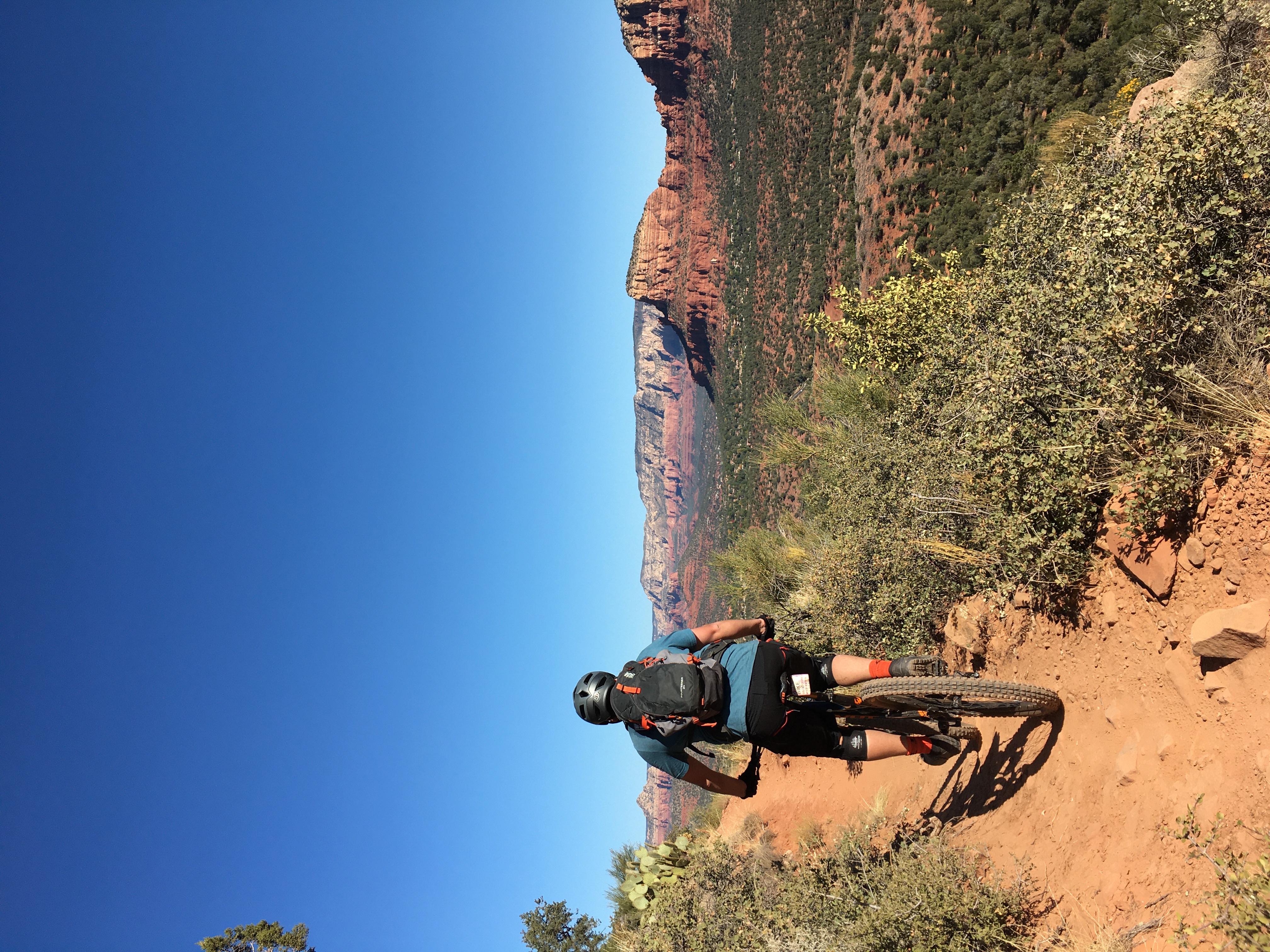
Now that we’ve covered the big things on the bike, here’s some accessories you’ll want to look into, ranked by most important (at least at the beginning):
Helmet. That’s a no brainer. Like, seriously, do it for your brain. The newest thing is mips technology, which helps distribute the force of an impact throughout the helmet instead of that one spot. Not to be a bully, but if you don’t wear a helmet, you are not cool. Smith and Poc make great helmets.
Shoes. Flats are great, their rubber bottoms mean they stick to pedals really well on both the up and down strokes. Five ten makes a great shoe.
Elbow/Knee Pads. There are different kinds, you’ll want something more heavy duty if you’re going to the downhill park, but G-Form makes a nice, lightweight option that uses a gel inside that hardens on impact to protect your soft bits.
Gloves. With your hands on the bars and gripping the brakes, gloves really help eliminate slipping after you get a little sweaty, and they keep my hands from cramping up. I love my Pearl iZUMis.
Shorts/Jersey. I mean, you gotta look cool while you’re doing it right?? Troy Lee is popular, but so long as you have something longer to protect your skin if you take a tumble, and is lightweight and breezy, you’ll be doing fine.
Glasses. I use the Smith Attacks, which are great because you get the dark shades for sunny days, then pink for dusk/cloudy days and clear if you’re heading out into the night. They’re easy to swap out and mine have held up great under heavy use for the past 6 years.
Pack. I love my Dakine bag because it has a mesh support that keeps the pack off of my back so it doesn’t get sweaty, which is the worst when you take it off and have to put it back on on chillier nights. My husband loves his Osprey fanny pack, which sits on his back above his hips. That’s smaller and the weight is lower which helps him keep his center of gravity while he’s riding, and it still has a pretty big bladder to carry water. But then I get stuck carrying the tools 😉
Tools. This list could go on and on, but there are a few things that will help in the majority of situations. A pump, to help inflate flat tires (the most notorious trail debacle). Tire irons, to take a tire off of the rim. A spare tube, in the size of your tire (for tube and tubeless tire riders). A multi-tool, which will have a screw, Allen wrench and other handy instruments. After that, everything is ‘nice to have’. A patch kit. A Co2 cartridge to quickly inflate a fully deflated tire. A bell on your handlebars to let hikers know you're coming up behind them. A beer cooler bike pad for your tailgate.
This should maybe have gone higher on this list, but it’s a little odd so it landed here. It is wise to have an airhorn, or mace or something like that if you do come into a weird situation. I’m thinking about aggressive moose or a mama bear. It's best to be prepared since your bike will take you far from others on an average ride.
After that the most important thing is to find some riding buddies to learn from. If you can find someone that goes at your pace that is great to start, since you can enjoy it without feeling like you're constantly playing catch up. You’re sure to feel that a little bit too, but keep at it, it’s worth it.

Here’s a list of some mountain bike-specific words:
- Hero dirt: most often right after a rain that makes the dirt tacky, but not muddy. You feel like a hero riding it
- Moon dust: slick dust that can be fun/scary to ride on
- Loam: common in the Pacific North West, the wet, peaty earth that is maybe a touch darker than hero dirt
- Sled: a sick mountain bike
- Point it down: heading downhill
- We’re about to go to downtown, Pain City: a tough uphill is coming up
- Put it in the mail!: send it, bro
Here’s some bike brands that are a good starting point. These are all larger brands that all shops will be familiar with:
- Trek
- Specialized
- Santa Cruz
These are more boutique brands that build killer bikes. Each one has their own tweaks and delirious fan bases. So be willing to deal and be dealt insults and praises based on your decision:
- Yeti
- Pivot
- Commencal
- Guerilla Gravity
- Niner
- Alchemy
- Canfield
If you're looking to get a campsite off the beaten path as a basecamp for your bike trips, check out Boreas Campers. With Timbren axel-less suspension, 20" of ground clearance and no-wood construction these trailers are meant to get away from the crowds. And with the optional MXT model, you can fit up to 5 bikes, just on the front of the trailer!
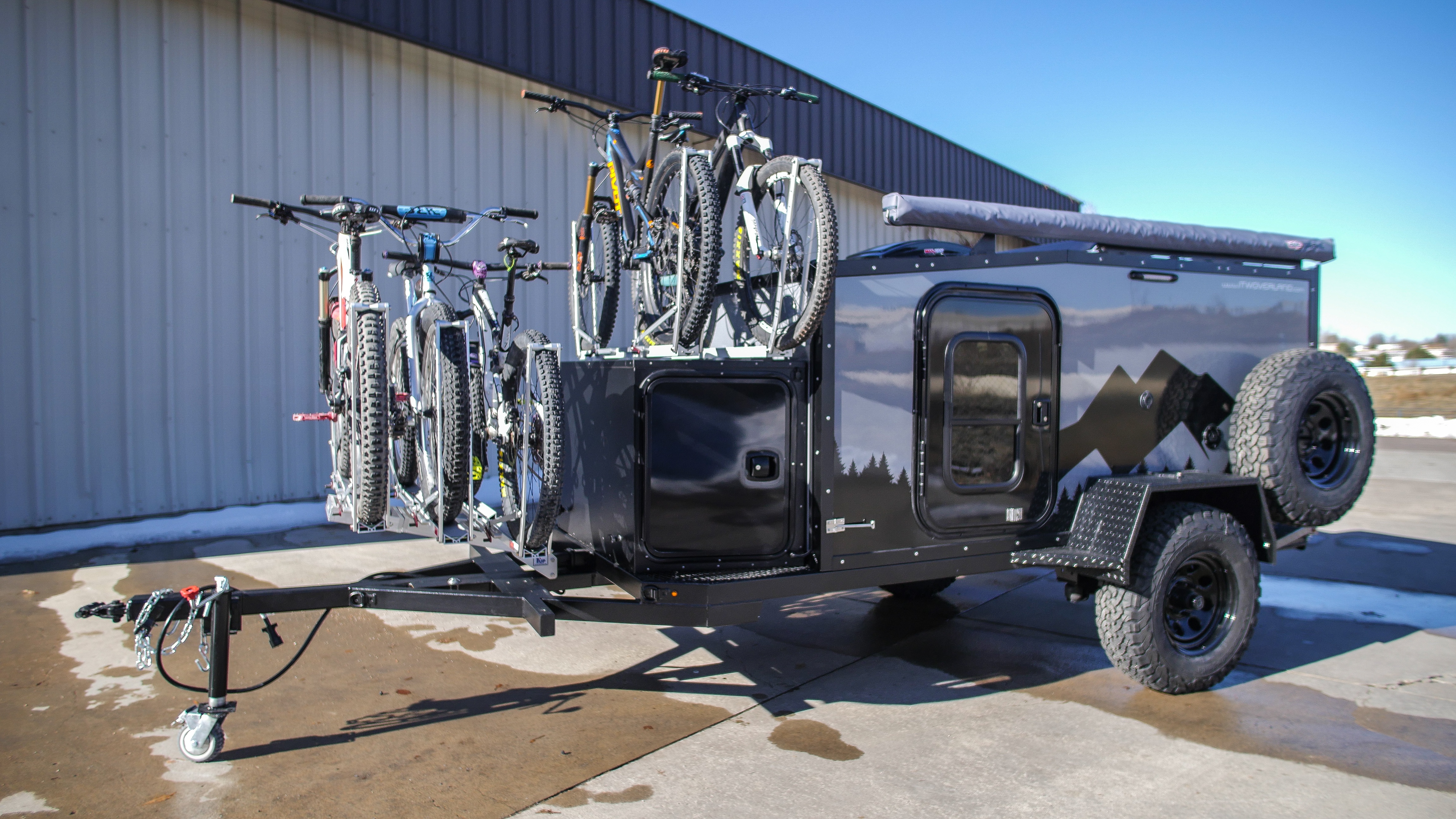
At the end of the ride just make sure you have a drink of choice waiting in your vehicle when you get back! I hope this guide was helpful. If there’s anything I missed let me know. Happy trails!
